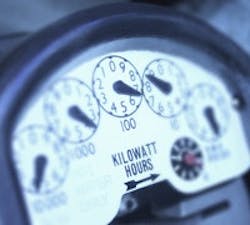Energy Management Begins with Measurement
Oil's likely to stay around $100 a barrel; natural gas is not as cheap as it used to be; and energy prices are volatile, making it expensive to hedge by buying long-term contracts. Your energy security depends on getting a grip on where your gas, compressed air and steam are going, and what you can do about it.
In their Emerson Exchange Wednesday morning session, "You Can't Manage What You Don't Measure: Getting a Handle on Plant Energy Usage," Emerson Process Management pressure measurement expert Brian Fretschel and flowmeter guru Joel Lembke talked about opportunities they've seen for reducing energy consumption, starting in the utility plant.
At 75% of operating costs, energy is an impressive line item at most facilities. "A typical process plant can save from $200,000 to more than $10 million a year by reducing energy consumption 10%," Lembke said. At the high end, in terms of reducing carbon emissions, "That's like taking 23,000 cars off the road."
- Allocate usage by operating unit;
- Correctly calculate cost and efficiency of operation;
- Identify opportunities for improvements;
- Balance mass and energy;
- Identify problems, detect leaks;
- Resolve billing conflicts;
- Comply with environmental regulations.
Being able to measure energy and steam flows and do energy and mass balances for different boilers can allow you to run the most efficient boilers more of the time, a low-capital way to reduce energy consumption. But measurements themselves must be made thoughtfully. For example, a nozzle steam flowmeter on a main line in a Colorado power plant caused a 7.5-psi pressure drop, which translated to a 0.5% loss in power plant efficiency worth $149,000 per year. (A low-pressure-drop Annubar flowmeter fixed it.)
Compressor and blower systems call for attention to pressure drops. "Instead of an orifice plate, consider an averaging Pitot tube," says Fretschel. That's how a large smelter reduced blower pressure requirements from 21.5 psig to 16 psig, saving $500,000 per year.
From wireless to flow conditioning to steam moisture and trap monitors, Lembke and Fretschel described many other examples of solving application issues and saving energy with pressure and flow instrumentation. With Emerson technology, there's no excuse to stay ignorant about your energy consumption.



